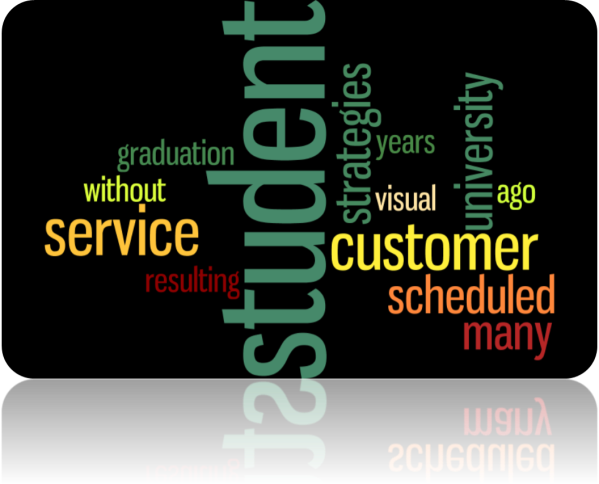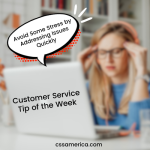 I was presenting results of mystery shopping research years ago to a Higher Ed client. There were about 150 people in the room, and in the middle of the presentation, two professors stood up on opposite sides of the auditorium and starting yelling at each other. They were arguing over whether students should be viewed as customers.
I was presenting results of mystery shopping research years ago to a Higher Ed client. There were about 150 people in the room, and in the middle of the presentation, two professors stood up on opposite sides of the auditorium and starting yelling at each other. They were arguing over whether students should be viewed as customers.
Without rehashing the details of that conversation 10+ years ago, let’s juxtapose that visual to the visual of Universities looking at customer service as a key to Student Success.
The transition is starting to happen – even in Higher Ed.
In the article Customer Service May Be A Key Ingredient To Increasing Successes And College Rankings Without Increasing Costs, the author highlights all the many initiatives that colleges and universities have underway to maximize student retention, graduation, and other measures of Student Success.
She states “Many schools are creating infrastructures that consider its students as customers; it wants its students to feel that the University is working for them rather than against them. This manifests itself in how students are treated in all aspects of their interactions with their university. It includes attention to course scheduling, ease of registering for courses, early provision of financial aid packages, etc. They want to make sure that students have a good experience.“
She offers as an example “Too often, classes are scheduled for the convenience of the faculty rather than the student resulting in most courses being scheduled between 10 and 4 Monday through Thursday resulting in conflicts for students when many of their classes are scheduled at the same time.“
The author highlights a University that has hired an executive to oversee the student experience strategy and to develop metrics to gauge performance.
Just as with any organization/business, it’s not all about the Education or the Price that keeps the student in school or facilitates their graduation. Sometimes it’s conveying to the student that they’re valued, and customer service in the development of organizational strategies and the 1-on-1 Moments of Truth where those strategies are implemented can be the difference between a student feeling valued or looking elsewhere.
Use customer service strategies and techniques to show you value the student.
Would you like to learn about how CSS helps Education-industry organizations succeed? Visit http://cssamerica.com/education-industry/














 Students are not customers. Parents are not customers. Vendors are not customers. Co-workers are not customers.
Students are not customers. Parents are not customers. Vendors are not customers. Co-workers are not customers.







